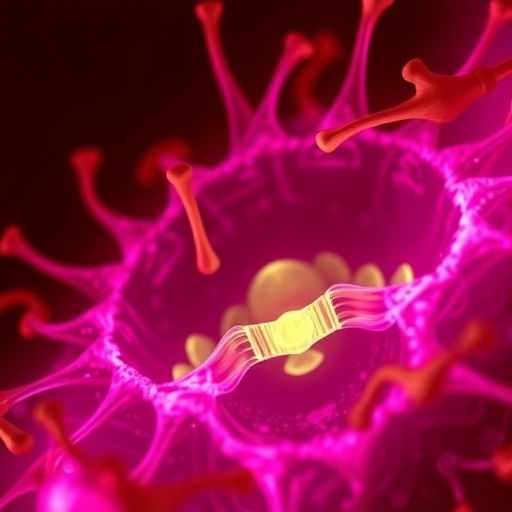In the realm of pediatric anesthesiology, the administration of anesthesia is a delicate balance between ensuring patient safety and minimizing adverse neurological outcomes. One of the most commonly employed anesthetic agents in pediatric procedures, particularly in infants and toddlers undergoing fundus examinations, is sevoflurane. Widely favored for its rapid onset and quick recovery profile, sevoflurane’s use comes with its own set of clinical challenges including the ominous complication known as emergence delirium (ED). A groundbreaking study recently published in Pediatric Research offers an in-depth analysis of the incidence of this phenomenon, the risk factors predisposing this fragile population to ED, and the broader implications on their postoperative behavioral health.
Emergence delirium is characterized by a state of acute confusion, agitation, and inconsolable crying during the immediate recovery phase from anesthesia. While it has been observed anecdotally for decades, the intricate mechanisms and predictive factors associated with ED in infants and toddlers have remained elusive. This new study spearheaded by Zhao, Hashimoto, Ding, and colleagues represents the first large-scale systematic evaluation focused exclusively on pediatric patients under sevoflurane anesthesia, aiming to disentangle the multifactorial risks and to correlate ED with subsequent negative postoperative behavioral changes (NPOBC).
The investigation enrolled a sizeable cohort of infant-toddler patients scheduled for fundus examinations under sevoflurane sedation. Researchers meticulously assessed behavioral patterns emerging from induction through recovery, employing validated scales designed to quantify delirium severity and postoperative behavioral disruptions. This robust methodology allowed for unprecedented granularity in tracking the temporal evolution of neurobehavioral responses post-anesthesia, laying bare the often subtle, yet clinically significant, nuances of emergence delirium.
Sevoflurane’s pharmacokinetics, with its low blood-gas partition coefficient, ensures rapid induction and recovery, a trait beneficial in outpatient pediatric procedures. However, the same properties may underpin a sudden neurophysiological shift during emergence, potentially triggering neuroexcitatory pathways implicated in delirium. The study posits that this abrupt cerebral transition can overwhelm immature neural circuits in infants and toddlers, rendering them vulnerable to ED. This novel pathophysiological insight contributes to a growing dialogue on neurodevelopmental susceptibility during anesthesia in early childhood.
Coupled with pharmacodynamics, patient-specific characteristics emerged as vital determinants of ED risk. Age was inversely correlated with incidence; the younger the patient, particularly those under two years, the higher the propensity for emergence delirium. This observation aligns with the understanding that neurodevelopmental immaturity exacerbates vulnerability to anesthetic-induced perturbations in consciousness. Moreover, preoperative anxiety syndromes and innate temperament traits were implicated as contributory, underscoring the psychosocial dimensions that interplay with biological susceptibilities.
A particularly influential finding was the association between the duration of sevoflurane exposure and the intensity of ED symptoms. Prolonged anesthetic administration correlated with more severe and protracted delirium episodes, suggesting dose-dependent neurotoxic effects or an augmented destabilization of neural homeostasis. This dose-response relationship heightens the urgency for optimizing anesthetic protocols, especially in elective pediatric procedures, to minimize exposure duration without compromising procedural efficacy.
Crucially, the study elucidated a compelling link between the occurrence of emergence delirium and subsequent negative postoperative behavioral changes. Infants and toddlers exhibiting ED were significantly more likely to demonstrate adverse behaviors post-discharge, including heightened nocturnal anxiety, feeding difficulties, and separation anxiety. These downstream behavioral perturbations persisted over weeks, indicating that ED may serve as a harbinger of longer-lasting neuropsychiatric vulnerabilities warranting early intervention and parental guidance.
Underlying the association between emergence delirium and long-term behavioral effects are complex neurochemical cascades involving neurotransmitter dysregulation and inflammatory responses triggered by anesthetic exposure. The authors hypothesize that early disruption of synaptic maturation and heightened neuroinflammation may precipitate these negative behavioral sequelae. As such, the study pioneers a holistic understanding shifting the focus beyond immediate anesthesia recovery to encompass broader neurodevelopmental trajectories impacted by anesthetic insults.
The implications of these findings reverberate through clinical practice, compelling pediatric anesthesiologists to reevaluate preoperative assessment and anesthetic management strategies. Incorporating predictive risk factor screening for emergence delirium might facilitate personalized anesthetic plans, including anxiolytic premedication or alternative sedation schemes. Moreover, heightened postoperative monitoring and supportive behavioral interventions become imperative to mitigate the enduring impact of NPOBC, aiming to preserve the neuropsychological well-being of pediatric patients.
From a research perspective, the study opens avenues for exploring potential neuroprotective agents capable of modulating the neuroinflammatory pathways implicated in emergence delirium. Investigations into non-pharmacologic interventions such as parental presence during induction or sensory modulation techniques might also attenuate the distress associated with awakening from anesthesia. The interplay between genetic predispositions, environmental stressors, and anesthetic pharmacology poised to be fertile ground for future inquiry.
The work by Zhao and colleagues represents a critical advance in pediatric anesthesiology, shining a light on a previously underrecognized neurobehavioral complication. It underscores the necessity for multidisciplinary collaboration among anesthesiologists, neurologists, psychologists, and pediatricians to devise comprehensive care models that prioritize both the immediate and long-term neurodevelopmental health of young patients undergoing anesthesia.
In bridging intensive clinical observations with molecular hypotheses, the study epitomizes translational medicine, demonstrating how bedside findings can catalyze bench research and vice versa. Its emphasis on a vulnerable pediatric subset propels advocacy for stringent anesthetic safety protocols, tailored to preserve neurocognitive integrity during a pivotal developmental window. As pediatric sedation techniques evolve, this research will remain a cornerstone reference guiding evidence-based improvements.
The study’s methodological rigor, including its prospective design, sizable sample, and validated outcome measures, lends robust credibility to its conclusions. Notwithstanding, the authors acknowledge limitations including the single-center setting and the focus on a specific procedural context, which may affect generalizability. Multicenter studies with heterogeneous populations will be essential to validate and expand upon these findings, ensuring broad applicability across pediatric anesthetic practice.
Importantly, the relationship delineated between sevoflurane anesthesia, emergence delirium, and negative postoperative behavioral changes calls for proactive parental education. Enhancing caregiver awareness about possible postoperative behavioral manifestations could promote early recognition and timely medical consultation, ultimately improving patient outcomes. Parental engagement emerges as a therapeutic adjunct complementing medical strategies.
In sum, this pioneering study offers a comprehensive panorama of emergence delirium in infants and toddlers subjected to sevoflurane anesthesia, charting critical risk factors and unveiling the consequential link to persistent behavioral disorders. Its insights offer a clarion call for clinicians and researchers alike to refine anesthetic protocols, augment perioperative care, and deepen our understanding of pediatric neurobehavioral health post-anesthesia. The ramifications extend beyond pediatrics, informing broader neurodevelopmental research and patient safety paradigms.
As the field advances, this work exemplifies the potential of focused pediatric anesthesia research to uncover intricacies of brain-behavior interplay, driving future innovations that safeguard the most vulnerable patients. The heightened awareness and evidence-based strategies emanating from this study herald a new era where anesthesia not only ensures procedural success but also champions lifelong neurological well-being.
Subject of Research: Risk factors for emergence delirium in infant-toddlers undergoing sevoflurane anesthesia and its impact on negative postoperative behavioral changes
Article Title: Risk factors for emergence delirium in infant-toddlers undergoing sevoflurane anesthesia and its impact on negative postoperative behavioral changes
Article References:
Zhao, W., Hashimoto, K., Ding, W. et al. Risk factors for emergence delirium in infant-toddlers undergoing sevoflurane anesthesia and its impact on negative postoperative behavioral changes. Pediatr Res (2025). https://doi.org/10.1038/s41390-025-04608-7
Image Credits: AI Generated
DOI: 10.1038/s41390-025-04608-7
Tags: acute confusion after anesthesiaagitation during recovery from anesthesiaanesthesia-induced delirium in young patientsbehavior changes following anesthesiaemergence delirium in toddlerslarge-scale pediatric researchneurological outcomes in infantspediatric anesthesia safetypediatric anesthesiologypostoperative behavioral health in childrenrisk factors for emergence deliriumsevoflurane anesthesia complications






